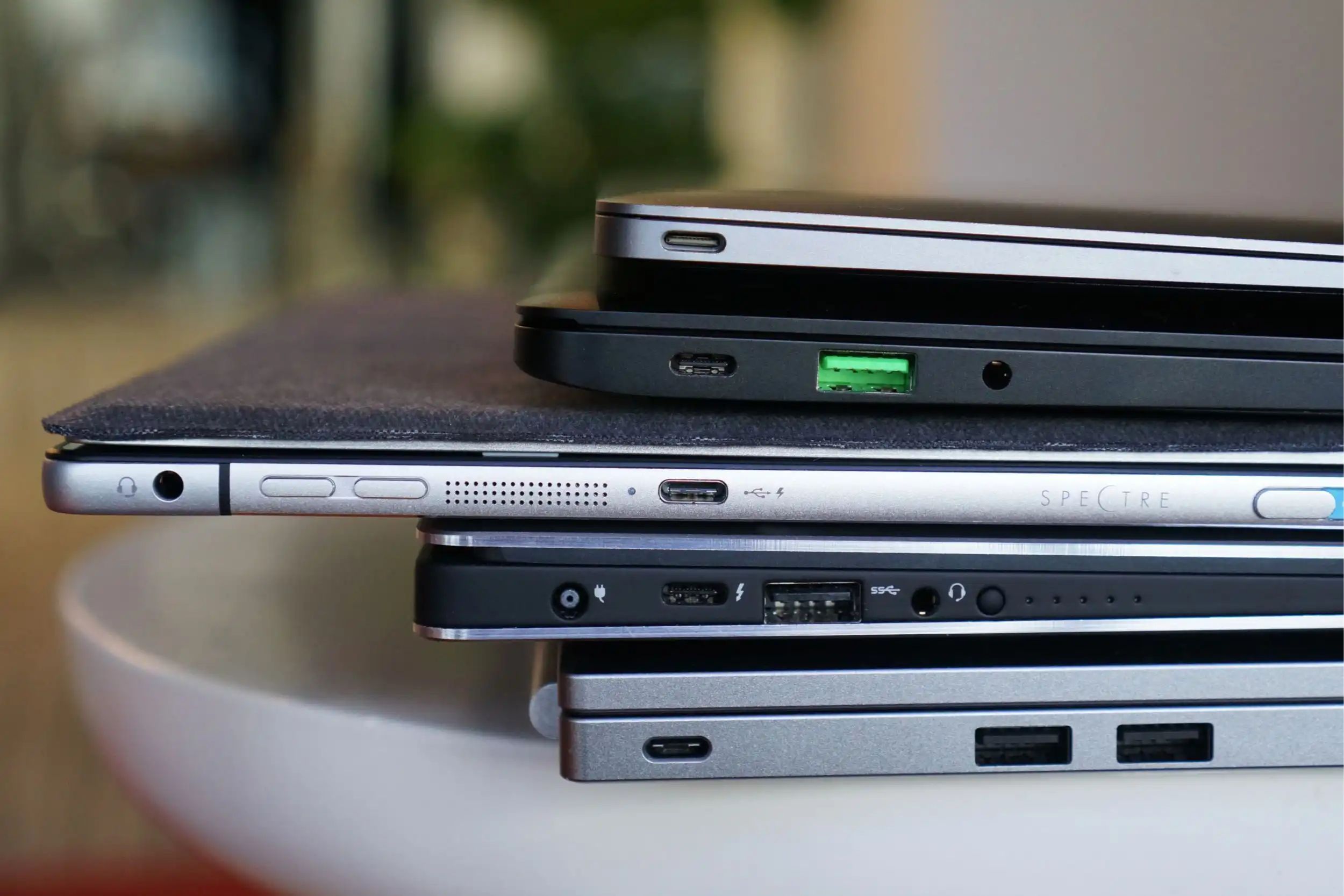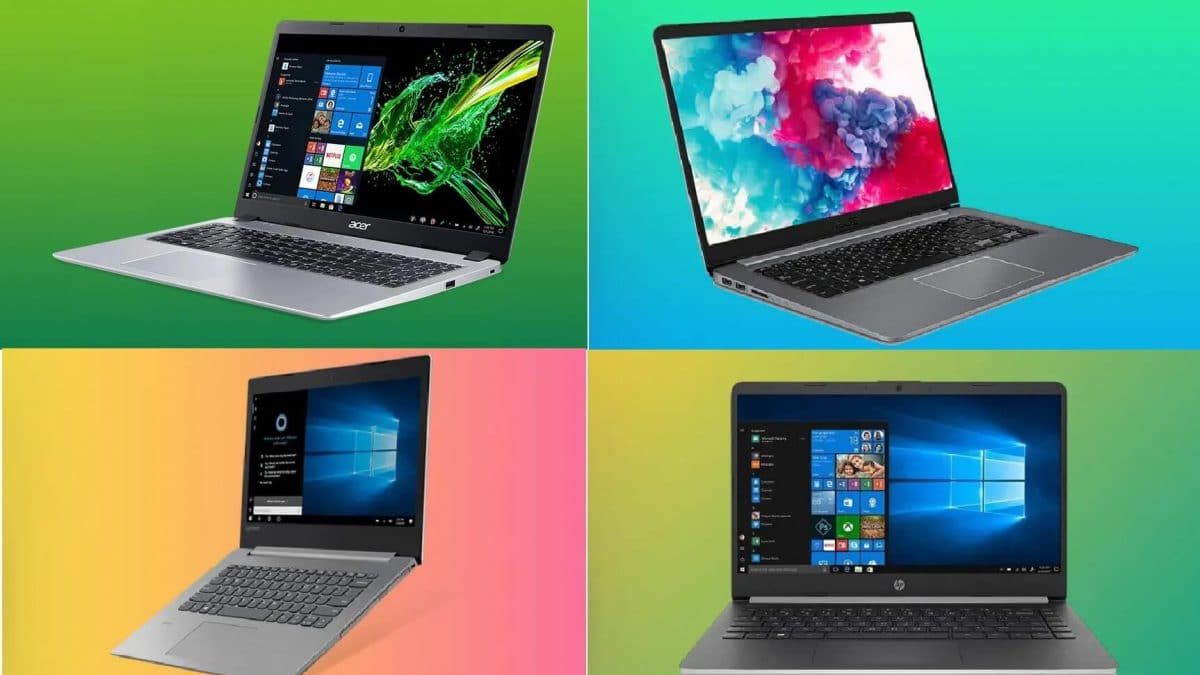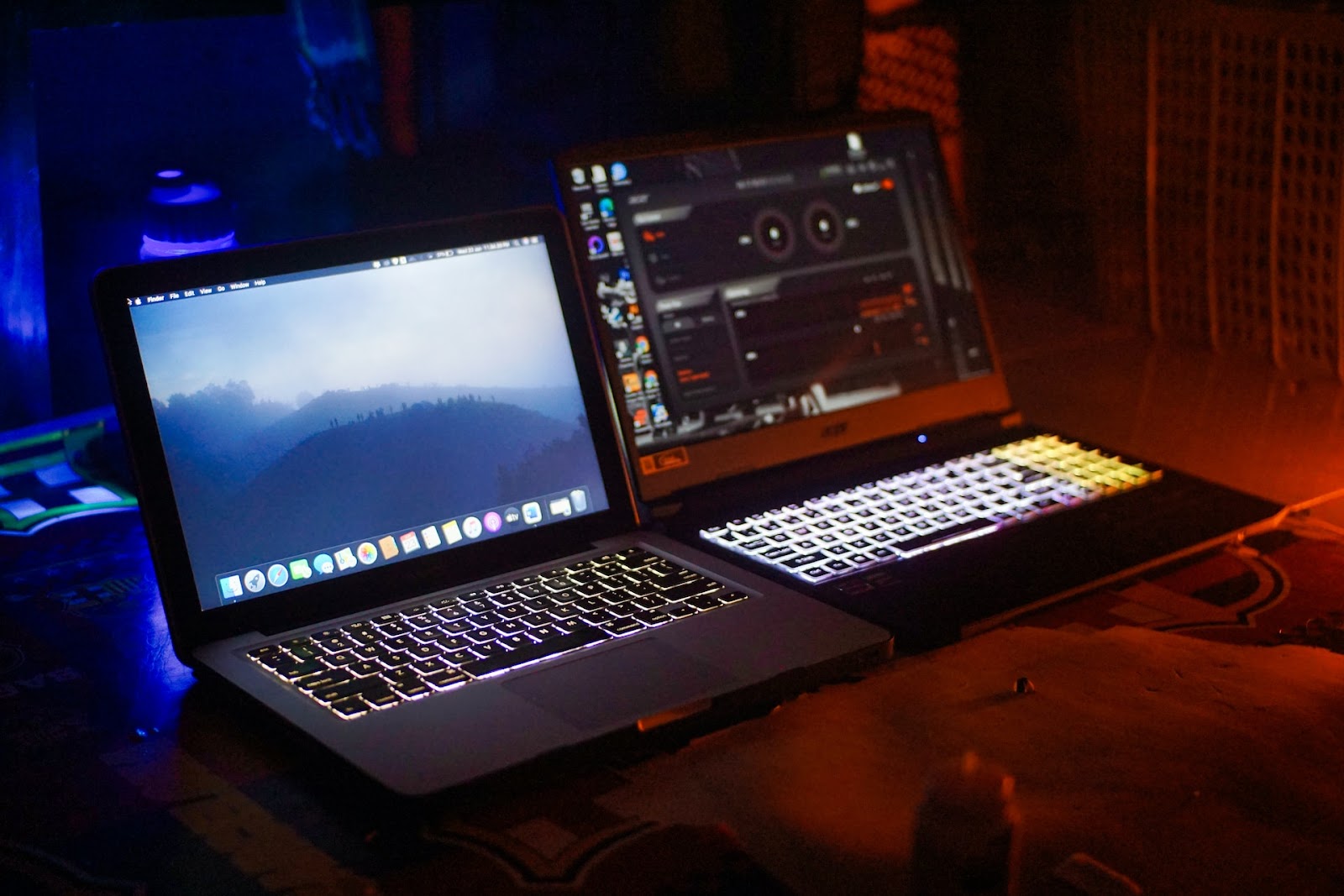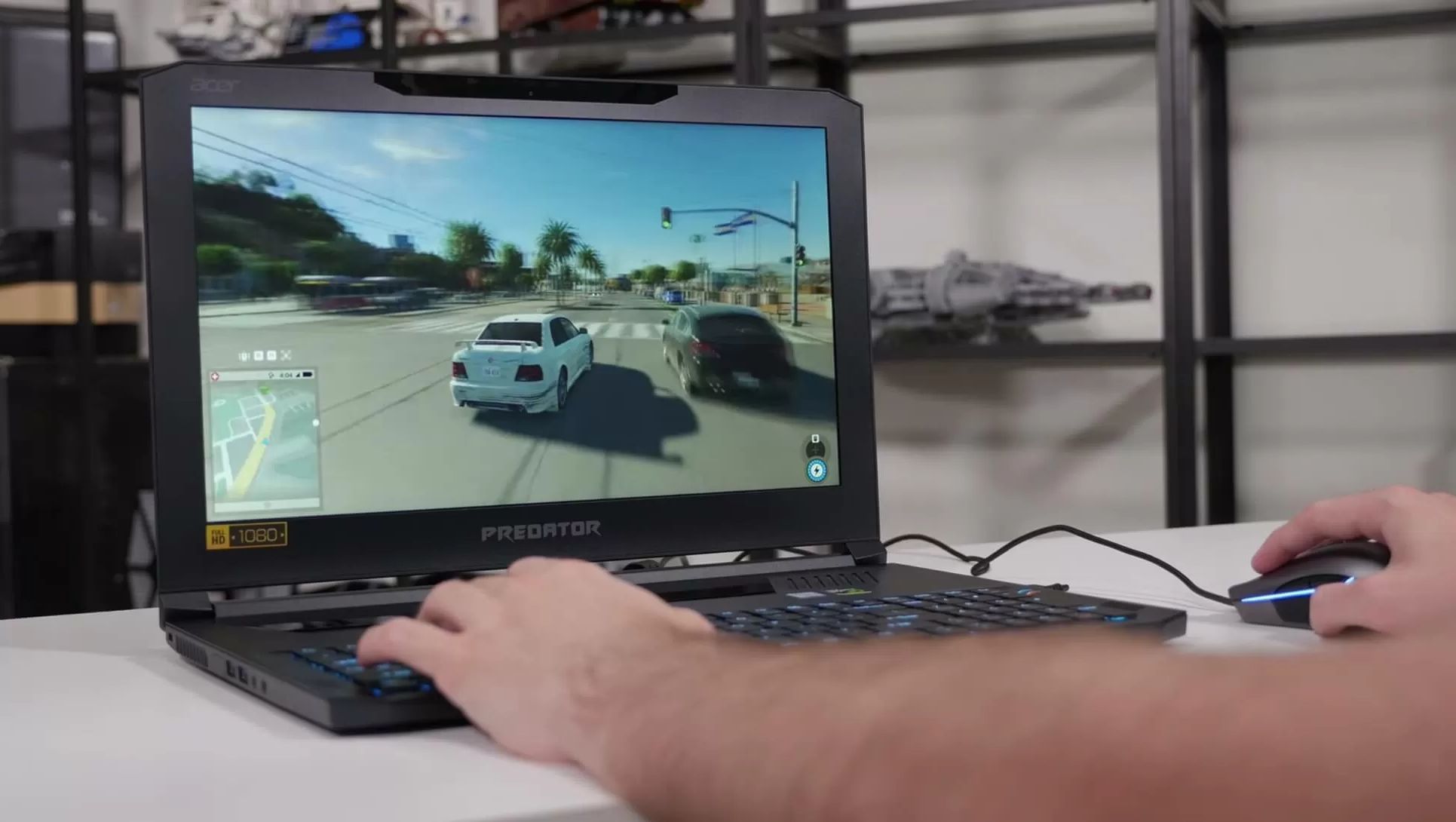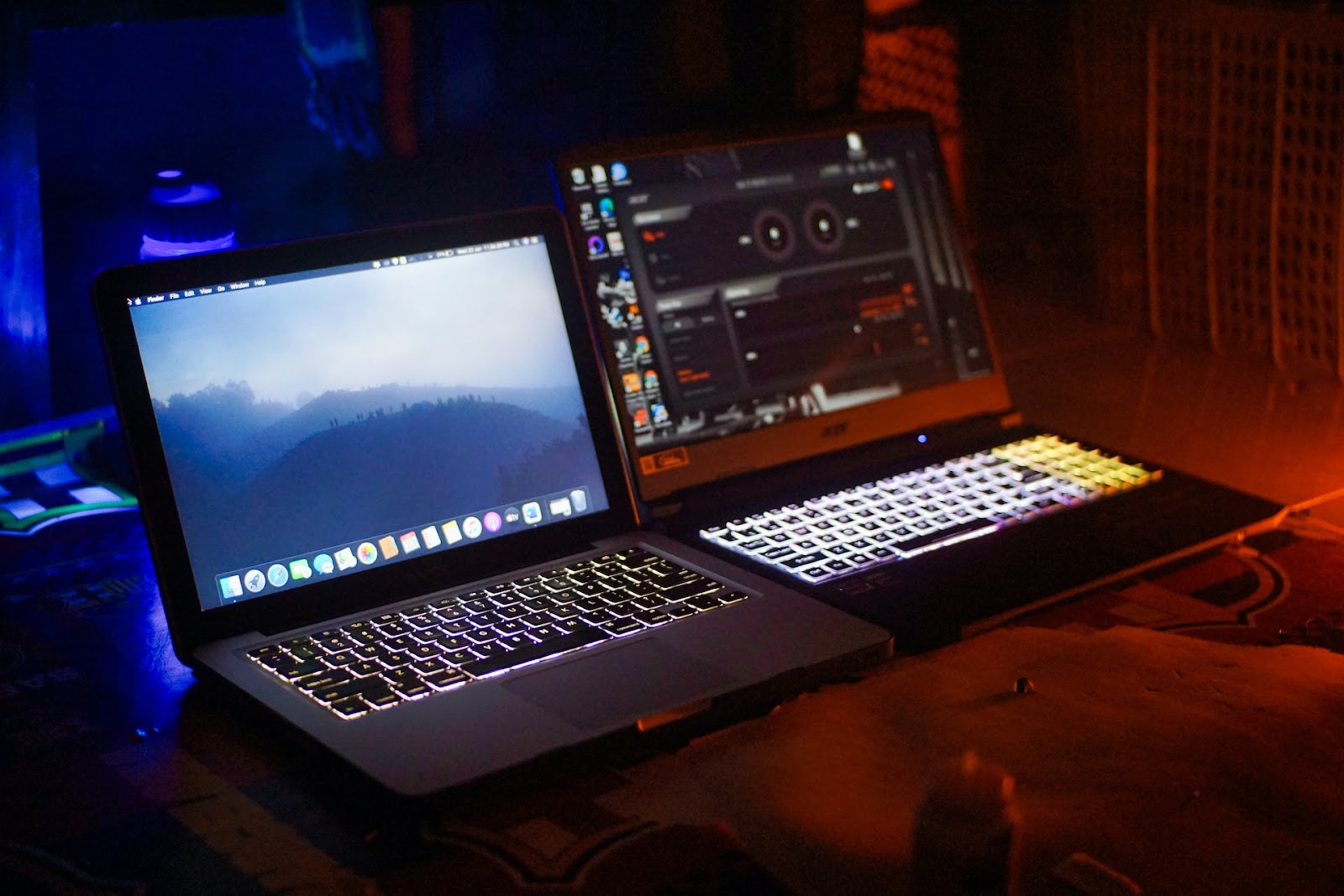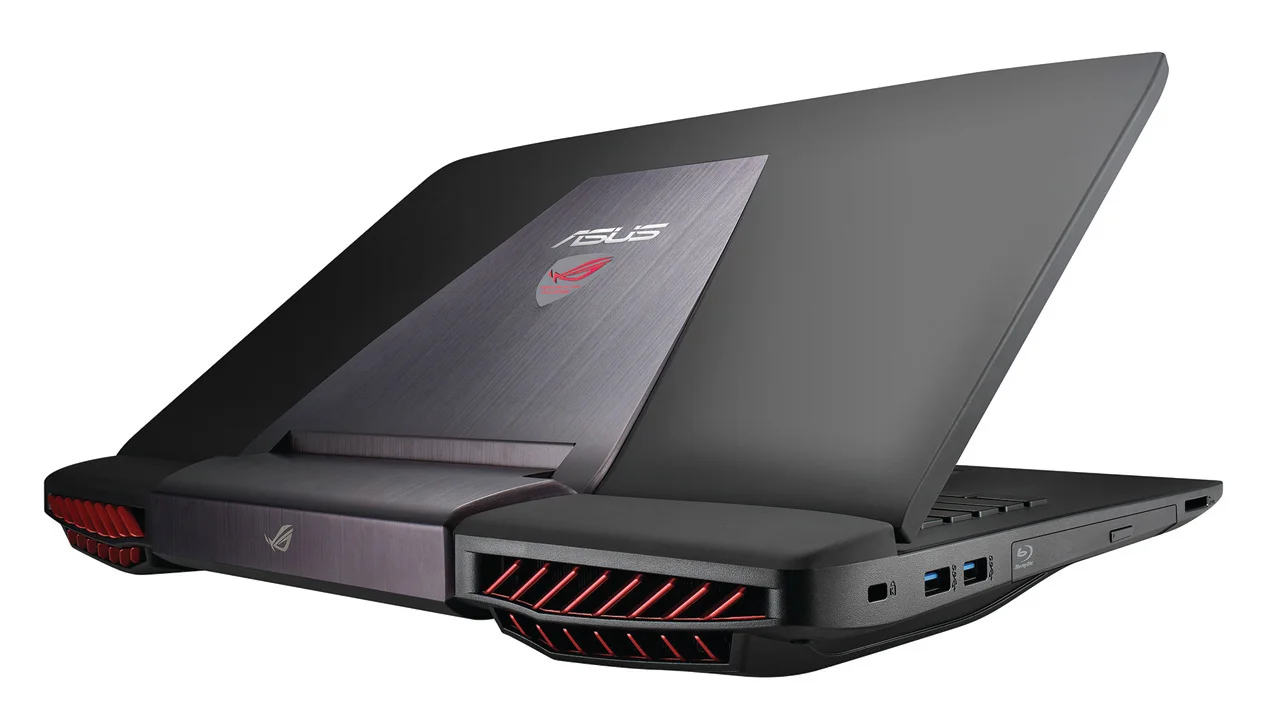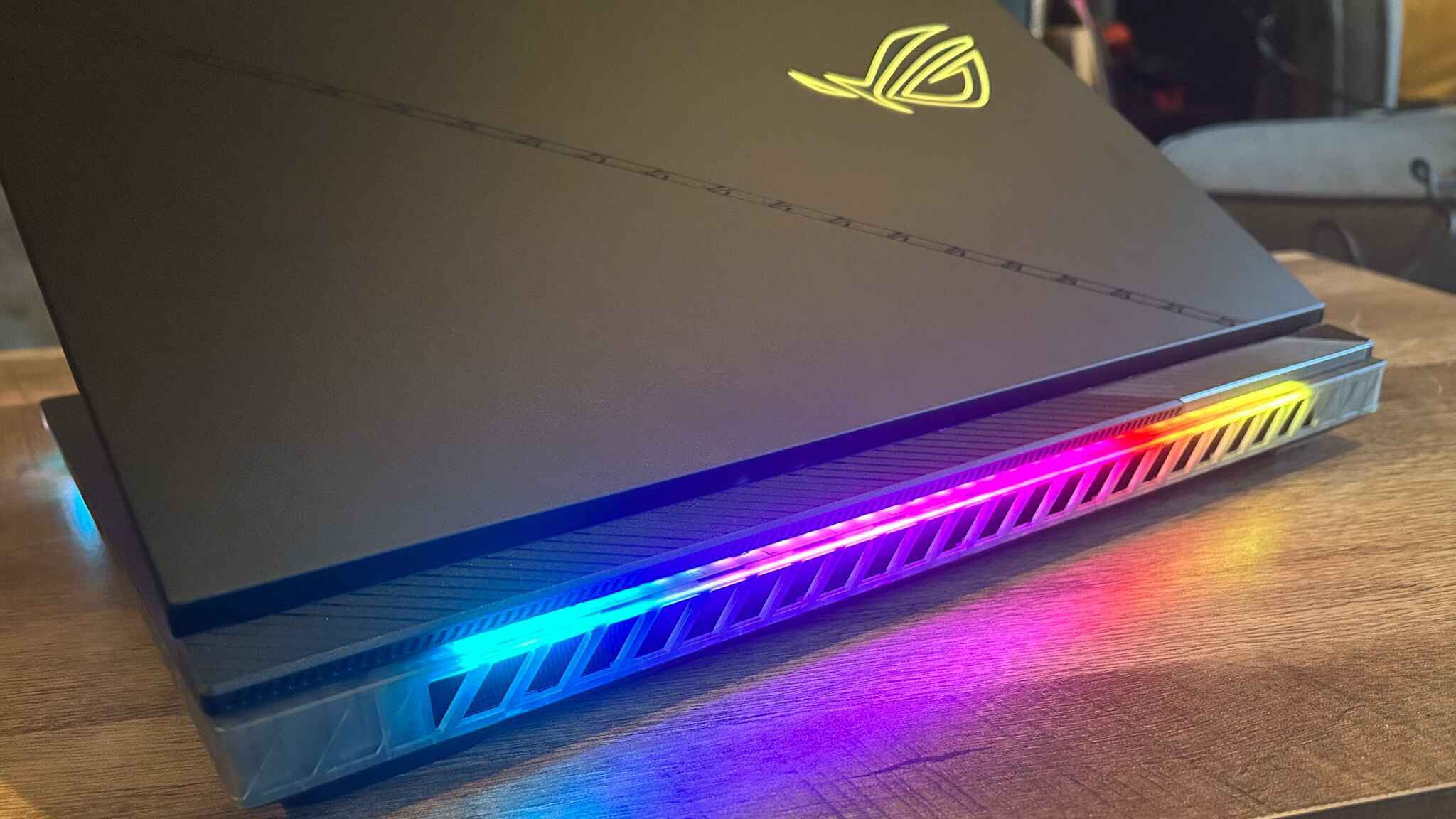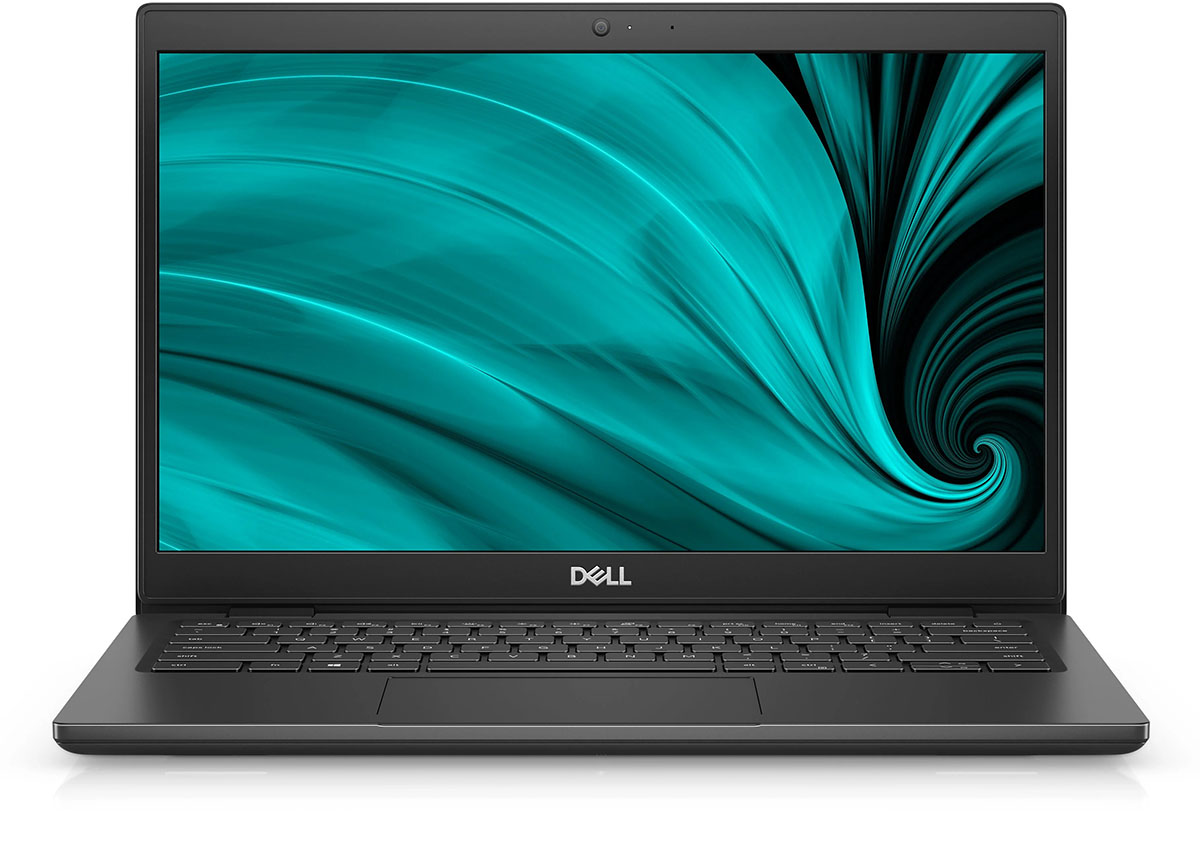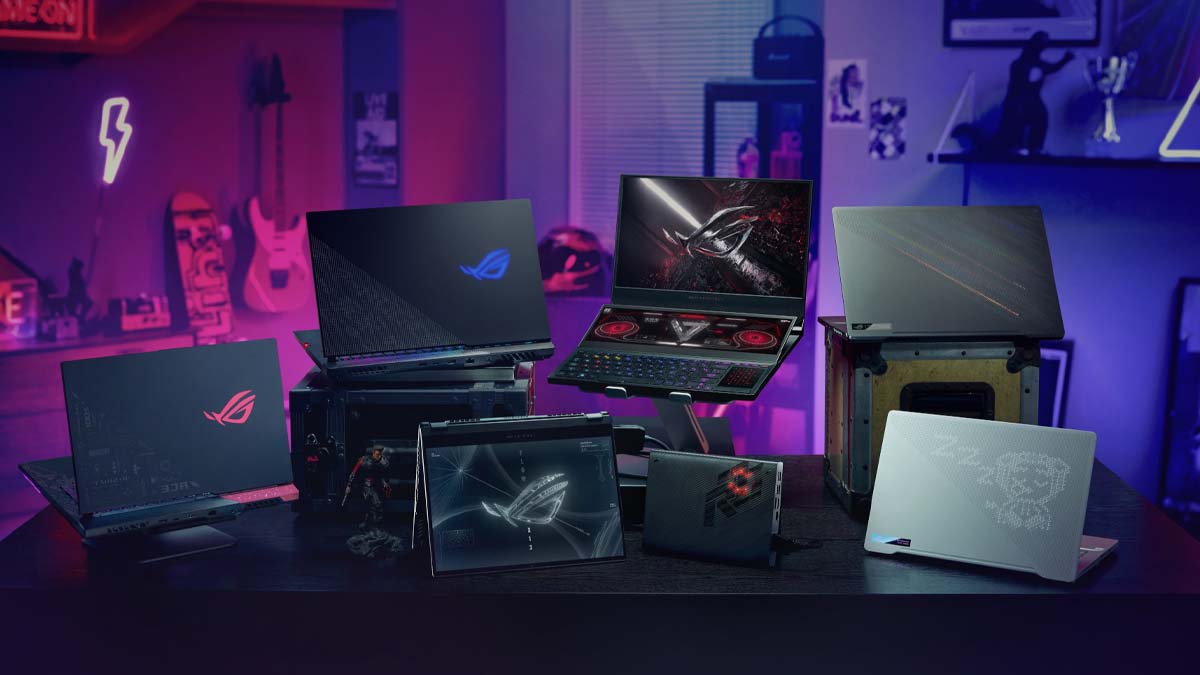Introduction
Gaming laptops have revolutionized the way we play and experience video games. They offer the convenience of portability without compromising on performance, allowing gamers to enjoy their favorite titles anywhere they go. However, one aspect that gamers often have to consider is the battery life of their gaming laptop. After all, what good is a powerful gaming machine if it can’t keep up with extended gaming sessions?
When it comes to battery life, gaming laptops face a unique set of challenges compared to their non-gaming counterparts. The high-performance hardware required to run graphically-intensive games and the power-hungry components can drain the battery quickly. Add to that the fact that gaming laptops are often designed with larger displays and more powerful cooling systems, and it becomes clear that a balance needs to be struck between performance and battery efficiency.
Understanding the factors that affect battery life on gaming laptops can help users make informed decisions when purchasing and using these machines. In this article, we will explore these factors and discuss how hardware specifications, power management settings, and optimization techniques can help maximize the battery life of gaming laptops.
By the end of this article, you will have a better understanding of how different components impact battery performance and how you can make adjustments to prolong the battery life of your gaming laptop. So, let’s dive in and uncover the secrets of maximizing battery life on gaming laptops!
Factors Affecting Battery Life on Gaming Laptops
Battery life on gaming laptops can vary significantly based on several factors. Understanding these factors is crucial for gamers who want to optimize their laptop’s battery performance. Here are the key factors that affect battery life on gaming laptops:
- Hardware Specifications: The hardware components of a gaming laptop play a major role in determining its battery life. High-performance processors, powerful graphics cards, and ample RAM can significantly drain the battery compared to lower-end specifications.
- Graphics Card: The graphics card is one of the most power-hungry components in a gaming laptop. The more powerful the graphics card, the more it will drain the battery. Graphics-intensive games and applications put additional strain on the GPU, resulting in decreased battery life.
- CPU: The central processing unit (CPU) also affects battery life. Higher-end CPUs that process tasks at faster speeds consume more power. Gaming laptops with overclocking capabilities may offer enhanced performance but at the cost of reduced battery life.
- RAM: While the amount of RAM itself does not directly impact battery life, the usage of RAM affects power consumption. Running multiple applications simultaneously or utilizing resource-intensive gaming software can increase power consumption, reducing the battery life.
- Display: The display size and resolution of a gaming laptop can affect battery life. Larger displays with higher resolutions require more power to illuminate and render the graphics. Choosing a laptop with a smaller, lower-resolution display can help increase battery efficiency.
- Battery Capacity: The size and capacity of the laptop’s battery will naturally impact how long it can sustain power. Higher-capacity batteries may offer longer battery life, but they can also add weight to the laptop. Finding a balance between battery capacity and portability is important.
- Power Management Settings: The power management settings on a gaming laptop can greatly influence battery performance. Adjusting settings such as screen brightness, sleep and idle timers, and CPU power modes can help extend battery life without sacrificing too much in terms of performance.
By taking these factors into account, gamers can make informed decisions and optimize their gaming laptops for better battery performance. In the following sections, we will delve into each of these factors in more detail, exploring how they impact battery life and presenting strategies to maximize battery performance.
Hardware Specifications and Battery Life
The hardware specifications of a gaming laptop have a significant impact on its battery life. Higher-end components tend to consume more power, resulting in shorter battery life. However, there are certain considerations that can help users make the most of their gaming laptops without sacrificing too much in terms of performance.
The processor, graphics card, and RAM are the key hardware components that affect battery life on gaming laptops. Here’s how each of these specifications plays a role:
- Processor (CPU): The CPU is responsible for executing tasks and calculations on the laptop. Higher-performance CPUs, such as Intel Core i7 or AMD Ryzen 7 processors, consume more power due to their increased processing capabilities. While these processors offer excellent gaming performance, they can drain the battery faster. Users who prioritize battery life may opt for laptops with lower-end CPUs, such as Intel Core i5 or AMD Ryzen 5, which strike a balance between performance and power efficiency.
- Graphics Card (GPU): Gaming laptops are equipped with dedicated graphics cards that handle the graphical processing required for gaming. Powerful GPUs consume a substantial amount of power, contributing to decreased battery life. For users who prioritize longer battery life over extreme gaming performance, laptops with lower-end graphics cards, such as NVIDIA GeForce GTX 1650 or AMD Radeon RX 5500M, can deliver decent gaming capabilities while being more power-efficient.
- RAM: The amount of RAM in a gaming laptop does not directly impact battery life. However, running multiple applications and games simultaneously can increase RAM usage, which in turn affects power consumption. It is recommended to close unnecessary background applications and limit the number of active programs to optimize power usage.
Choosing the right hardware specifications for your gaming laptop depends on your individual needs and preferences. If battery life is a top priority, opting for laptops with lower-end CPUs and graphics cards can provide a balance between performance and power efficiency. However, if you require maximum gaming performance, be prepared for shorter battery life and consider investing in additional battery packs or external power sources for extended gaming sessions.
In the next sections, we will explore how individual components like the graphics card, CPU, and display impact battery life on gaming laptops, and discuss ways to optimize battery performance without compromising on gaming experience.
Graphics Card and Battery Life
The graphics card (GPU) is one of the most power-hungry components in a gaming laptop, and it has a significant impact on battery life. The GPU’s primary function is to handle the graphical processing required to render games and applications. However, more powerful graphics cards consume more power, resulting in shorter battery life.
When choosing a gaming laptop, it’s essential to consider the trade-off between GPU performance and battery efficiency. High-end GPUs, like the NVIDIA GeForce RTX series or AMD Radeon RX 6000 series, offer unparalleled gaming performance but have higher power requirements. On the other hand, mid-range or entry-level GPUs, such as NVIDIA GeForce GTX series or AMD Radeon RX 500 series, strike a balance between performance and power efficiency.
To optimize battery life without sacrificing too much gaming performance, consider the following tips:
- Adjust Graphics Settings: Most modern games allow users to customize graphics settings to balance performance and visual quality. Lowering settings like resolution, texture quality, and anti-aliasing can reduce GPU load and power consumption, extending battery life. Experiment with different settings to find the right balance.
- Limit Frame Rate: High frame rates can put a strain on the GPU and consume more power. Setting a frame rate limit, such as 60fps or 30fps, can help reduce GPU workload and conserve battery power. Many games and graphics software offer built-in options to cap the frame rate.
- Utilize Battery-Saving Modes: Gaming laptops often come with power management software that includes battery-saving modes. These modes reduce GPU power and performance to extend battery life. Enable these modes when running on battery power, and switch to high-performance modes when connected to a power outlet.
- Close Unnecessary Background Applications: Running multiple applications or software in the background can increase GPU usage and power consumption. Close any unnecessary applications or utilities to free up system resources and reduce overall power usage.
- Consider GPU Switching: Some gaming laptops come with switchable graphics, allowing users to switch between integrated graphics and dedicated GPUs. Using integrated graphics for general tasks and switching to the dedicated GPU only when running games or graphics-intensive applications can help save battery life.
It’s important to note that adjusting graphics settings and utilizing power-saving techniques may slightly reduce gaming performance. However, striking a balance between power efficiency and gaming experience is key to maximizing battery life on your gaming laptop.
In the next section, we will explore how the CPU (processor) impacts battery life and discuss strategies to optimize its performance without draining the battery excessively.
CPU and Battery Life
The CPU (Central Processing Unit) is another crucial component that affects battery life on gaming laptops. The CPU is responsible for executing tasks and calculations on the laptop, including running games and software. Higher-performance CPUs tend to consume more power, resulting in decreased battery life.
When choosing a gaming laptop, it’s important to strike a balance between CPU performance and power efficiency. The latest generation of Intel Core i7 or AMD Ryzen 7 processors offer excellent gaming performance but can drain the battery faster due to their increased processing capabilities. Lower-end CPUs like Intel Core i5 or AMD Ryzen 5 strike a better balance between performance and power consumption.
To optimize battery life without compromising too much on gaming performance, consider the following tips:
- Adjust Power Modes: Most gaming laptops come with power management software that allows users to customize power profiles. Opt for power-saving modes that limit the CPU’s maximum performance while prolonging battery life. It’s important to find the right balance between power efficiency and acceptable gaming performance.
- Manage Background Processes: Unnecessary background processes and applications can utilize CPU resources and increase power consumption. Close any non-essential programs and utilities running in the background to reduce CPU workload and save battery life.
- Monitor CPU Usage: Keep an eye on the CPU usage while gaming. If you notice consistently high CPU usage, it may be worth checking for any unnecessary software or background tasks that could be taxing the CPU. Task Manager or other system monitoring software can help identify such processes.
- Optimize Game Settings: Adjusting in-game settings can help reduce CPU usage and improve battery efficiency. Lowering settings like physics simulation, draw distance, and AI complexity can offload CPU processing and decrease power consumption without significantly impacting the gaming experience.
- Apply Firmware Updates: Manufacturers often release firmware updates that include performance and power optimizations for their CPUs. Check for and install the latest firmware updates for your gaming laptop to benefit from improved power management features.
Remember that optimizing CPU performance for better battery life may slightly impact gaming performance. It’s crucial to experiment with different power modes and settings to find the right balance that suits your needs.
In the next section, we will discuss how the laptop’s RAM (Random Access Memory) affects battery life and explore strategies to optimize its usage for improved battery efficiency on gaming laptops.
RAM and Battery Life
While the amount of RAM itself does not directly impact battery life on gaming laptops, the usage of RAM can affect power consumption. RAM (Random Access Memory) is responsible for temporarily storing data and instructions for the CPU to access quickly during operation. Running multiple applications and games simultaneously can increase RAM usage, which in turn affects power consumption.
Here are some tips to optimize RAM usage and improve battery life on your gaming laptop:
- Close Unnecessary Background Applications: Running multiple background applications consumes RAM and increases power consumption. Close any unnecessary applications and processes that are not in use to free up system resources and reduce RAM usage. This will help conserve battery power.
- Limit Resource-Intensive Programs: Certain games and software can be resource-intensive and consume a significant amount of RAM. If battery life is a priority, consider closing other applications and browser tabs that are not essential while gaming. This will reduce RAM usage and enhance the laptop’s overall power efficiency.
- Optimize Virtual Memory: Virtual memory, also known as the page file, is a space on the hard drive used by the operating system to store data when physical RAM is limited. Adjusting the virtual memory settings can help optimize RAM usage and improve battery life. You can try increasing the initial size and maximum size of the page file to ensure smoother performance when physical RAM is in high demand.
- Upgrade RAM: If your laptop has limited RAM capacity and you often find yourself running out of memory while gaming, consider upgrading your RAM. Increasing the amount of RAM allows for smoother multitasking and reduces the need for frequent data swapping between RAM and virtual memory, which can lead to improved battery efficiency.
- Monitor RAM Usage: Keep an eye on the RAM usage while gaming. Some games may have memory leaks or other performance issues that can cause excessive RAM usage and impact battery life. Monitoring RAM usage can help identify such issues and find solutions, such as applying game updates or tweaking in-game settings.
Optimizing RAM usage is essential for efficient power management on your gaming laptop. By closing unnecessary background applications, limiting resource-intensive programs, optimizing virtual memory, and monitoring RAM usage, you can effectively improve battery life without sacrificing gaming performance.
In the next section, we will explore how different display specifications can impact battery life on gaming laptops and discuss ways to optimize display settings for prolonged battery performance.
Display and Battery Life
The display of a gaming laptop is a prominent component that can significantly impact battery life. Larger display sizes and higher resolutions require more power to illuminate and render graphics, resulting in increased power consumption. To optimize battery life without compromising the visual experience, consider the following tips:
- Screen Brightness: Lowering the screen brightness can have a significant impact on extending battery life. Reduce the brightness level to a comfortable setting that still allows for clear visibility while gaming. Most gaming laptops have dedicated function keys or software controls to easily adjust screen brightness.
- Screen Timeout: Setting a shorter idle time for the screen timeout can help conserve battery power. If the laptop is left idle for an extended period, it will automatically turn off the display, reducing power consumption.
- Disable Ambient Lighting: Some gaming laptops feature ambient lighting around the keyboard or bezels. While these lighting effects enhance the gaming experience, they also consume additional power. Disabling or reducing the brightness of ambient lighting can help save battery life.
- Optimize Display Refresh Rate: Higher display refresh rates, such as 144Hz or 240Hz, provide a smoother gaming experience but consume more power. If battery life is a priority, consider lowering the refresh rate to a standard 60Hz or 120Hz. This adjustment can significantly improve battery efficiency without compromising gameplay.
- Adjust Resolution: Running games at higher resolutions, such as 1440p or 4K, requires more GPU power and consequently drains battery life. If extending battery life is crucial, consider lowering the resolution to 1080p or lower. This adjustment may result in slightly reduced visual quality, but it can significantly increase battery efficiency.
Each of these adjustments helps strike a balance between optimal display settings and battery life on your gaming laptop. Experiment with different brightness levels, screen timeout settings, and display resolutions to find the sweet spot that suits your gaming preferences while maximizing battery performance.
Remember to adjust these settings according to your current power source. For example, utilize high-performance display settings when connected to a power outlet, and conserve battery power with optimized settings when running on battery.
In the next section, we will explore the impact of battery capacity and power management settings on gaming laptop battery life, as well as strategies to optimize these aspects for extended gameplay.
Battery Capacity and Battery Life
The battery capacity of a gaming laptop directly affects its overall battery life. A larger battery capacity typically provides longer battery life, allowing gamers to enjoy extended gameplay sessions without the need for frequent recharging. Here’s how battery capacity impacts battery life:
Battery Capacity: The battery capacity is measured in watt-hours (Wh) and indicates the amount of energy the battery can store. A higher watt-hour rating signifies a larger capacity and generally results in longer battery life. Gaming laptops usually have battery capacities ranging from 40Wh to 90Wh or more, with larger capacity batteries providing extended playtime.
While the battery capacity is an important factor, it’s essential to note that a higher capacity battery may add weight to the laptop. Users should consider their portability needs and strike a balance between battery capacity and the overall weight of the gaming laptop.
To optimize battery life and make the most of the available capacity, consider the following tips:
- Adjust Power Management Settings: Take advantage of the power management options available on your gaming laptop. Adjust power profiles, screen timeout settings, and sleep/hibernation timers to optimize power consumption and prolong battery life during gaming sessions.
- Minimize Background Processes: Close any unnecessary background applications and processes that are not essential for gaming. These processes consume CPU, GPU, and RAM resources, putting additional strain on the battery. Reducing background tasks can help improve battery efficiency.
- Manage Network Connectivity: Network connectivity, such as Wi-Fi or Bluetooth, consumes power when active. If gaming does not require an internet connection or Bluetooth peripherals, consider disabling these features to conserve battery power.
- Utilize Power-Saving Modes: Many gaming laptops come with power-saving modes that can help extend battery life. These modes limit the performance of the CPU and GPU, reduce screen brightness, and adjust other system settings to minimize power consumption. Activate these modes when running on battery power to maximize playtime.
- Plan Ahead with External Battery Packs: If you anticipate long gaming sessions away from a power outlet, investing in external battery packs or power banks can provide additional power on the go. These portable charging solutions can extend the battery life of your gaming laptop and keep your gaming sessions uninterrupted.
By implementing these strategies and optimizing power management settings, you can make the most of your gaming laptop’s battery capacity and enjoy extended gameplay without the need for frequent recharging.
In the next section, we will discuss power management settings in more detail and explore ways to optimize them for improved battery efficiency on gaming laptops.
Power Management Settings and Battery Life
Power management settings play a crucial role in optimizing battery life on gaming laptops. With the right adjustments, you can maximize battery efficiency without sacrificing gaming performance. Here are some power management settings to consider:
- Power Plans: Most gaming laptops offer different power plans, such as Balanced, Power Saver, or High Performance. Each plan alters various settings, including CPU performance, screen brightness, and system sleep timers. Opt for a power plan that strikes a balance between performance and power efficiency when running on battery power.
- Screen Brightness: Lowering the screen brightness is an effective way to conserve battery power. Reduce the brightness to a level that is comfortable for gaming while minimizing power consumption. Many laptops have dedicated function keys or software controls to easily adjust screen brightness.
- Sleep and Hibernation Settings: Adjust the sleep and hibernation settings to ensure the laptop conserves power during periods of inactivity. Set shorter sleep timers or use hibernation mode to save power when the laptop is not in use.
- CPU and GPU Power Modes: Many gaming laptops offer power modes that allow you to adjust the performance of the CPU and GPU. These modes can range from power-saving to high-performance settings. Opt for power-saving or balanced modes to achieve longer battery life during gaming sessions.
- Disable Keyboard Lighting: Gaming laptops often have backlit keyboards that consume additional power. If battery life is a concern, consider disabling or minimizing the brightness of the keyboard lighting to conserve power.
- Wireless Connectivity: Wi-Fi, Bluetooth, and other wireless connectivity options consume power when active. Disable these features when not in use to minimize power consumption and extend battery life during gaming sessions.
- Update Drivers and Firmware: Regularly check for driver and firmware updates for your gaming laptop. Manufacturers often release updates that include power optimizations and bug fixes. Keeping your laptop up to date can help improve power management and overall battery efficiency.
These power management settings can be adjusted through the operating system’s power management options or the manufacturer’s proprietary software. However, keep in mind that overly aggressive power-saving settings may result in reduced gaming performance. It’s important to strike a balance that optimizes power consumption without sacrificing playability.
Experiment with different power plans and settings to find the configuration that suits your needs. It’s recommended to create a custom power plan that balances performance and battery efficiency for optimal gaming on your specific gaming laptop.
In the next section, we will discuss additional strategies and optimization techniques for prolonging battery life on gaming laptops.
Optimizing Battery Life on Gaming Laptops
While gaming laptops are known for their power-hungry nature, there are several strategies and optimization techniques that can help extend battery life without compromising gaming performance. Here are some additional tips to consider:
- Monitor System Temperatures: Ensuring that your gaming laptop stays cool can indirectly help improve battery life. Excessive heat can cause the laptop’s components, including the battery, to work harder and drain more power. Keep the laptop’s ventilation areas clear and consider using a cooling pad or external cooling solutions to maintain optimal temperatures.
- Manage Background Applications: Close any unnecessary background applications and processes that are not essential for gaming. These unnecessary processes consume system resources and put additional strain on the CPU, GPU, and RAM, resulting in increased power consumption. Prioritize gaming and limit the number of active programs to optimize power usage.
- Optimize Game Settings: Adjust in-game settings to find the right balance between performance and power consumption. Lowering graphics settings and disabling resource-intensive features can help reduce the load on the CPU and GPU, resulting in improved battery efficiency without significantly sacrificing the gaming experience.
- Manage Game Streaming and Recording: If you stream or record gameplay using resource-intensive software, be mindful of the impact on battery life. Streaming and recording require additional processor power and network bandwidth. Opt for lower quality settings or consider recording and streaming sessions when connected to a power source to minimize battery drain.
- Optimal Gaming Environment: Creating an optimal gaming environment can indirectly contribute to better battery life. Playing games in a well-lit environment reduces the need for maximum screen brightness, allowing for better battery efficiency. Additionally, ensuring a comfortable seating position and using external peripherals like mice and keyboards can reduce battery consumption by minimizing excessive laptop usage.
- Stay Updated: Keep your gaming laptop’s operating system, drivers, and firmware up to date. Manufacturers often release updates that include performance optimizations and power management enhancements. Checking for and installing updates regularly can help improve overall battery efficiency and gaming performance.
- Test and Adjust Settings: Every gaming laptop performs differently, so experimentation is key. Test different settings, power plans, and optimization techniques mentioned earlier to find the optimal configuration that suits your gaming preferences while maximizing battery life.
By implementing these optimization techniques, you can significantly improve battery life on your gaming laptop and prolong your gaming sessions between charges. However, it’s important to remember that battery life may still vary based on individual laptop models, usage patterns, and the specific games being played.
Finding the right balance between performance and battery efficiency ultimately depends on your personal preferences and priorities. Whether you prioritize longer battery life or maximum gaming performance, these optimization tips can help you make the most of your gaming laptop’s battery while enjoying an immersive gaming experience.
Conclusion
Battery life is a crucial consideration for gamers who use gaming laptops. While high-performance hardware and power-hungry components can drain the battery quickly, understanding the factors that affect battery life and implementing optimization strategies can help prolong playtime without sacrificing gaming experience.
We discussed the impact of hardware specifications such as the graphics card, CPU, and RAM on battery life. Choosing the right balance between performance and power efficiency is key when selecting a gaming laptop. Adjusting graphics and power settings, closing unnecessary background applications, and monitoring resource usage can help optimize power consumption.
Additionally, display settings and power management options play a vital role in maximizing battery life. Adjusting screen brightness, screen timeout, and using power-saving modes allow for better power efficiency. Monitoring system temperatures, managing background processes, and optimizing game settings are crucial in extending battery life further.
It’s important to keep in mind that finding the perfect balance between battery life and gaming performance is a personal choice. Prioritizing battery life may require compromising on certain graphical settings or performance levels. On the other hand, prioritizing gaming performance may result in shorter battery life.
By implementing the optimization techniques discussed in this article, gamers can maximize the battery life of their gaming laptops and enjoy extended gaming sessions without interruptions. It is recommended to experiment with different settings, power plans, and strategies to find the configuration that suits individual needs and preferences.
Remember to keep your gaming laptop updated with the latest drivers and firmware, as manufacturers often release updates that include performance and power management enhancements.
In conclusion, understanding the factors affecting battery life, optimizing hardware settings, managing power consumption, and finding the right balance between performance and battery efficiency can help gamers make the most of their gaming laptops and enjoy prolonged gaming sessions on the go.







